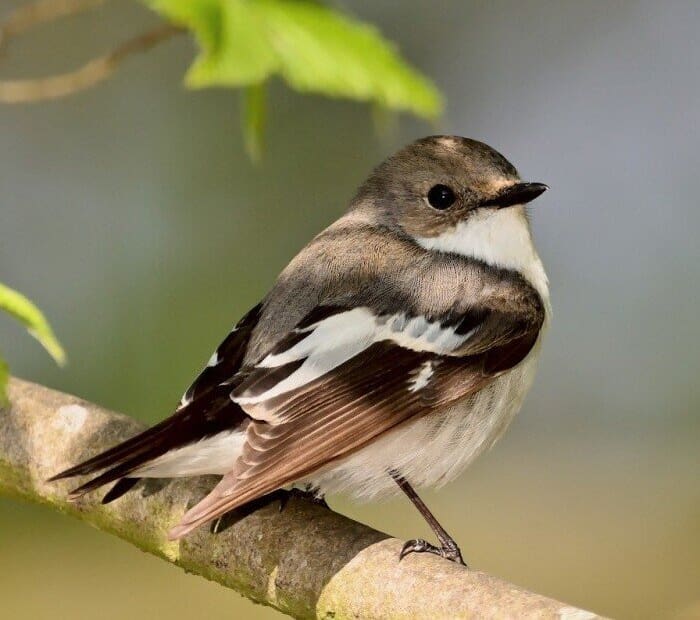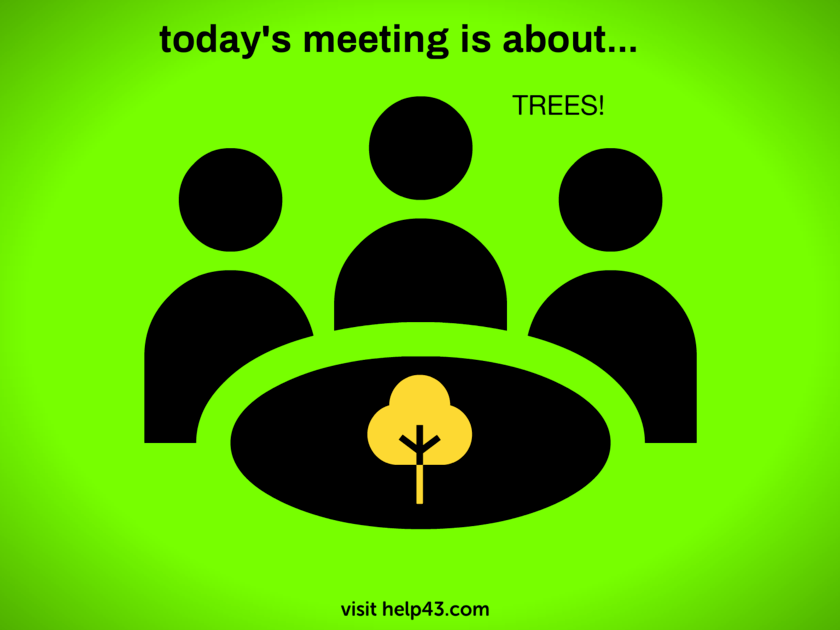Trees That Attract Birds To Your Yard
Inviting birds into your yard isn’t just good for the environment. It brings a whole lot of perks right to your doorstep. Not only can it improve your garden’s health, but it also transforms your space into a lively sanctuary.
Birds are natural pest controllers. They munch on insects that can harm your plants, reducing the need for chemical pesticides. Imagine fewer mosquitoes and caterpillars munching away on your precious greens!
Pollination is another big win. Many birds help transfer pollen from one flower to another, boosting your plants’ reproductive success. This means a more vibrant, fruitful garden.
Birds are also great at spreading seeds. They eat fruits and berries, and as they move around, they drop seeds in different areas. This helps in plant diversity and growth, giving your yard a beautiful, varied look over time.
Setting up a bird-friendly yard gives you front-row seats to nature’s theater. There’s nothing like waking up to birdsong or watching colorful species flit about. Birdwatching can be incredibly relaxing and fulfilling, adding a sense of peace and joy to your daily life.
Essential Features of Bird-Friendly Trees
To make your yard a bird haven, you need trees that cater to their needs. Key features make certain trees irresistible to birds, boosting your chances of regular feathered visitors.
First, fruit-bearing trees are goldmines for birds. Species like crabapple, cherry, and mulberry offer a steady food source, drawing in various birds. The fruit gives birds energy and keeps them coming back for more.
Providing shelter and nesting sites is another crucial feature. Birds need places to build nests and hide from predators. Trees with dense canopies and sturdy branches, like oaks and maples, offer excellent hiding and nesting spots.
Insects and caterpillars that live on trees provide a nutritious food source for many birds. Trees like willows and birches attract insects, making them hotspots for hungry birds.
Size matters too. Tall trees can attract different bird species compared to shorter trees or shrubs. A mix of heights can create a layered habitat, appealing to more bird species. Tall pines or firs can be home for perching or nesting, while shorter trees cater to ground feeders.
Integrating these essential features in your yard’s trees can create a welcoming environment for a variety of birds, turning your yard into a vibrant and active ecosystem.
Top Native Trees That Attract Birds
Native trees are a top choice for your bird-friendly yard. They’re well-adapted to the local climate and soil, making them easier to grow and maintain. More importantly, native birds are more likely to recognize and use these trees, enhancing the local ecosystem.
Take the American Holly, for instance. With its bright red berries and dense foliage, it attracts an array of bird species, providing both food and shelter. Another great option is the Red Maple. Its seeds, known as samaras, are a favorite among many birds, plus it offers excellent nesting sites thanks to its sturdy branches.
Oak trees deserve a shoutout, too. They support a wide variety of insects, which in turn attract insect-eating birds. Oaks also produce acorns, a vital food source for many bird species. The Eastern Red Cedar is another standout. It offers blue berries that are particularly popular with birds and creates a good shelter with its evergreen foliage.
Selecting native trees can positively impact your yard’s bird population over the long term. These trees often require less water and fertilizer once established, making them a sustainable choice for eco-conscious gardeners.
Plus, planting a variety of native trees can ensure that you provide for different bird species’ needs throughout the year. The more diverse your tree selection, the more birds you’ll attract, creating a bustling, vibrant backyard.
Flowering Trees That Draw in Pollinators
Flowering trees are a major magnet for birds, thanks to their vibrant blossoms and abundant nectar. These trees not only add visual appeal to your yard but also attract species that thrive on nectar and insects.
Magnolias are an excellent choice. Their large, fragrant flowers are a hit with birds, especially those that love nectar. Plus, they often bloom early, making them one of the first food sources available in the spring.
Dogwoods are another great option. Their flowers attract a variety of insects, which in turn attract insect-eating birds. Dogwoods also produce berries that many bird species find irresistible.
Cherry blossoms may be famous for their beauty, but they’re also incredibly bird-friendly. When in bloom, they draw in insects galore, creating a buffet for birds. Later in the season, their small fruits serve as a snack for various species.
Hawthorns offer dense clusters of blossoms that are highly attractive to insects and birds alike. Their late-spring flowers provide food during a critical time when early bloomers have faded. Plus, birds feast on hawthorn berries come fall.
When planting flowering trees, it’s wise to consider the timing of their blooms. A mix of early, mid, and late season bloomers ensures that birds have a continuous food supply.
Evergreen Trees are a Year-Round Habitat for Birds
Evergreen trees are vital for providing a consistent shelter and food source to birds throughout the year. Unlike deciduous trees, evergreens maintain their foliage across all seasons, giving birds a reliable place to nest and hide from predators.
Pines are excellent evergreen choices. Their dense needles offer perfect nesting sites, and the pinecones provide seeds that many bird species love. Spruce trees are also highly attractive. Their thick branches offer year-round cover and their seeds are a favorite for birds like crossbills and siskins.
Junipers are another strong contender. They produce berries that continue to provide nutrition during the colder months, making them a go-to for birds when other food sources are scarce. The dense foliage also makes for excellent shelter against winter winds and snow.
Hollies, with their evergreen leaves and bright berries, are a two-in-one treasure. They offer both shelter and food, attracting species like robins and cedar waxwings. The prickly leaves also protect nests from potential predators, giving birds a safer nesting ground.
Choosing evergreen trees for your yard means creating a year-round sanctuary for birds. It keeps your garden vibrant even in winter and ensures that birds have a constant refuge, regardless of the season. This kind of continuity is critical for keeping local bird populations happy and thriving.
Fruit Trees are Nature’s Bird Feeders
Fruit trees are like the all-you-can-eat buffet for birds. Planting them in your yard not only adds beauty but also draws a diverse range of birds. Different fruit trees attract different species, so you’ll get a nice mix of feathered visitors depending on what you plant.
Apple trees are a classic choice. Their fruits attract a variety of birds, from robins to waxwings. Crabapples work similarly but are often smaller and more manageable if you’re low on space. Just make sure to choose varieties that thrive in your local climate for best results.
Mulberries can be a big hit. These trees produce an abundance of small fruits that birds absolutely love. Plus, mulberries often fruit through the summer, providing a consistent food source when other fruits might be scarce.
Cherries are another excellent option. They attract a host of birds, including blue jays and cardinals. The dual-purpose of beauty and function makes them a fantastic addition to any bird-friendly yard.
Plums offer both beauty and utility. Their fruits are attractive to birds, and the spring blossoms are a bonus. Additionally, plums require relatively low maintenance, making them a practical choice for busy gardeners.
When selecting fruit trees, it’s key to consider the timing of fruit availability. Staggering different species can ensure that there’s always something available for your avian friends, keeping them around through various seasons. Plus, healthy fruit trees are beneficial to your garden ecosystem as a whole.
Planting and Caring for Bird-Friendly Trees
Planting bird-friendly trees requires some planning but the payoff is worth it. The first step is choosing the right spots in your yard. Trees need space to grow, so make sure there’s enough room for their roots and branches to spread out without interference.
Once you’ve picked your location, planting is the next task. Dig a hole that’s twice as wide as the tree’s root ball but not deeper. This allows roots to spread easily, helping the tree anchor well into the soil. Gently remove the tree from its container, place it in the hole, and backfill with a mix of the soil you dug up and compost.
Watering is crucial, especially during the first few years. Keep the soil moist but not waterlogged. Typically, a deep watering once a week is sufficient, but this can vary depending on rainfall and soil type. Mulching around the base helps retain moisture and manage weeds, but avoid piling mulch against the trunk, which can cause rot.
Fertilization isn’t always necessary for native trees, as they’re adapted to local soils. However, if your soil is poor, a slow-release, balanced fertilizer can give the trees a boost. Be cautious not to over-fertilize, as this can do more harm than good.
Pests and diseases can pose challenges but there are organic ways to handle them. Introducing beneficial insects like ladybugs can control aphid populations. Neem oil and insecticidal soaps can also ward off pests without harming birds.
Pruning is another key part of tree care. Remove dead or diseased branches to keep the tree healthy. Prune in late winter or early spring before new growth starts, and avoid heavy pruning during nesting season to not disturb bird inhabitants.
Creating a Diverse Bird-Friendly Yard
To truly make your yard a haven for birds, diversity is key. Combining trees with shrubs and ground cover can create a layered environment that supports various bird species.
Shrubs, like the native Serviceberry or Viburnum, offer food and shelter close to the ground. They’re especially useful for ground-feeding birds and provide different nesting options than taller trees. Mixing in ground covers like clover or native grasses can attract insects and provide seeds, further enriching the habitat.
Layered vegetation creates multiple tiers of shelter and food sources. Taller trees offer perching and nesting sites for larger birds, while mid-level shrubs serve smaller species. Ground covers complete the picture by enriching the soil and providing additional food sources.
Complementary plants, such as flowering perennials and annuals, can draw in insects that many birds feed on. Sunflowers, echinacea, and milkweed are excellent choices. These plants not only add color but also bring in pollinators, which in turn attract birds that feast on them.
Sustainable landscaping practices can keep your bird-friendly yard thriving. Opt for organic fertilization and pest control methods to avoid harmful chemicals that could affect bird populations. Rain gardens and native plantings help manage water efficiently, ensuring that your plants—and the birds—flourish.
Observing and Enjoying the Birds in Your Backyard
Setting up a bird-friendly yard is only half the fun—the real joy comes in observing and enjoying the birds that visit. A few tools and tips can enhance your birdwatching experience.
Binoculars are a great investment. They help you get a closer look without disturbing the birds. There are many types available, so consider what will best suit your needs and budget.
A good bird identification guide is also handy. Whether you choose a book, an app, or both, it helps you identify and learn more about the different species that visit your yard.
Adding bird-friendly features can make your yard even more attractive. Bird baths provide a water source, essential for drinking and bathing. Make sure to clean the bird baths regularly to keep the water fresh.
Bird feeders can supplement the natural food sources in your yard. Opt for different types of feeders to attract various species. Just like bird baths, feeders need regular cleaning to prevent disease.
Keeping a record of your bird sightings can be fun and educational. A simple notebook or a birding app can track the different species you see, offering insight into seasonal patterns and behaviors.
Sharing your sightings with friends or birdwatching groups can add a social aspect to this hobby. You can exchange tips, learn from each other, and even participate in citizen science projects that contribute to bird conservation efforts.
Enjoy the little friends!
.
Thank you for likes, shares and comments! 🌳🌴🌲🌵
Invest in your future
Take time to learn
Embark on your journey in affiliate marketing and website creation alongside an incredible community and myself. Invest in your future by dedicating time to learn and earn. Take all the time you need to master the basics before aiming higher. Give it a try and sign up for free. You won't regret it! Discover the possibilities for yourself...



